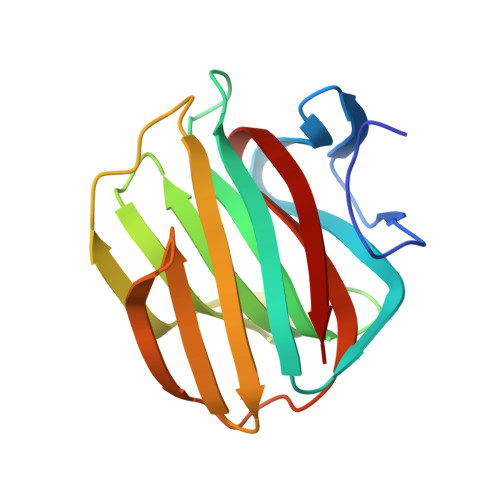How Nature Can Exploit Nonspecific Catalytic and Carbohydrate Binding Modules to Create Enzymatic Specificity
Cuskin, F., Flint, J.E., Gloster, T.M., Morland, C., Basle, A., Henrissat, B., Coutinho, P.M., Strazzulli, A., Solovyova, A.S., Davies, G.J., Gilbert, H.J.(2012) Proc Natl Acad Sci U S A 109: 20889
- PubMed: 23213210
- DOI: https://doi.org/10.1073/pnas.1212034109
- Primary Citation of Related Structures:
4AZZ, 4B1L, 4B1M - PubMed Abstract:
Noncatalytic carbohydrate binding modules (CBMs) are components of glycoside hydrolases that attack generally inaccessible substrates. CBMs mediate a two- to fivefold elevation in the activity of endo-acting enzymes, likely through increasing the concentration of the appended enzymes in the vicinity of the substrate. The function of CBMs appended to exo-acting glycoside hydrolases is unclear because their typical endo-binding mode would not fulfill a targeting role. Here we show that the Bacillus subtilis exo-acting β-fructosidase SacC, which specifically hydrolyses levan, contains the founding member of CBM family 66 (CBM66). The SacC-derived CBM66 (BsCBM66) targets the terminal fructosides of the major fructans found in nature. The crystal structure of BsCBM66 in complex with ligands reveals extensive interactions with the terminal fructose moiety (Fru-3) of levantriose but only limited hydrophobic contacts with Fru-2, explaining why the CBM displays broad specificity. Removal of BsCBM66 from SacC results in a ~100-fold reduction in activity against levan. The truncated enzyme functions as a nonspecific β-fructosidase displaying similar activity against β-2,1- and β-2,6-linked fructans and their respective fructooligosaccharides. Conversely, appending BsCBM66 to BT3082, a nonspecific β-fructosidase from Bacteroides thetaiotaomicron, confers exolevanase activity on the enzyme. We propose that BsCBM66 confers specificity for levan, a branched fructan, through an "avidity" mechanism in which the CBM and the catalytic module target the termini of different branches of the same polysaccharide molecule. This report identifies a unique mechanism by which CBMs modulate enzyme function, and shows how specificity can be tailored by integrating nonspecific catalytic and binding modules into a single enzyme.
Organizational Affiliation:
Institute for Cell and Molecular Biosciences, The Medical School, Newcastle University, Newcastle upon Tyne NE2 4HH, United Kingdom.
















